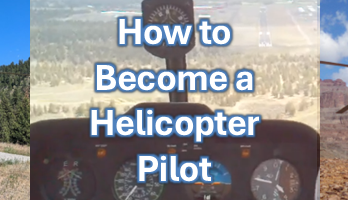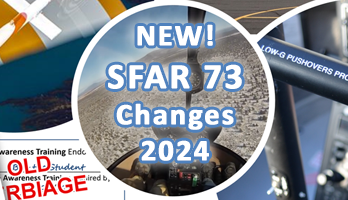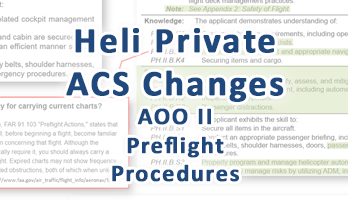This is the thirtieth training flight in a series following a student through his flight training from day 1 to checkride in an R22.
A ‘stage check’ is the last step before a checkride (assuming it goes well) and is usually performed by an senior instructor, other than the student’s usual instructor. So the purpose of a ‘mock’ stage check is for the student experience their usual instructor in more in a testing than teaching mode to help prepare for the eventual stage check and identify any weaknesses.
Some highlights of this lesson:
- Pinnacle approaches
- OGE hover check technique
- 180° autorotations right and left
- Running landing
- Steep approach
- Max performance takeoff
- Hover auto
NOTES/TIPS:
00:40 make a habit of at least internally verbalizing how wind direction and strength will affects each pickup
0140 be aware of performance limitations and possible causes (max gross weight, use of carb heat, etc)
02:50 the Bonanza pilot’s radio calls are an example of too many radio calls (better than none at all though)
06:00 verbalize to the instructor/examiner if deliberately flying slower than usual, otherwise it looks like you are not paying attention
06:30 don’t use the words “…clear of the ‘active’…” – name the runway to help others know what runway is in use
07:00 running landing
07:40 if below 18″ MAP think carb heat (if correct conditions warrant it’s use)
08:40 1000′ aiming area is a target but not a Practical Test Standard (PTS) requirement – use what you need of the runway
09:20 air taxi to quickstop
11:00 know your OGE performance (-2,000’ if using carb heat!)
11:50 technique to check OGE performance using an OGE hover check
13:10 ATC addon for home flight simulators to practice radio calls
13:50 “get there like a commercial pilot “- pull max continuous power
14:00 pinnacle approaches discussed – viewing slope angle from along side landing area
15:30 wind demarcation line discussed
16:30 ridge/pinnacle approaches – consider in/out/abort more than open flat areas, and if require more than 90° turn, maybe over committed
17:30 demonstration of high recon for a pinnacle
19:40 turn initially in to the wind before making a turn when low and slow
21:10 demonstration of OGE hover check
25:00 demonstration of a low approach to a pinnacle
26:50 keep situational awareness without relying on GPS
27:10 R22 IGE/OGE charts – know how much fuel to burn to get over the ‘knee’ of the chart and get significantly better performance
31:00 discussing autorotation flare techniques/tips
32:30 get used to pulling own carb heat (rather than asking the instructor for assistance) as the examiner will usually not do it for you
34:00 remember to check for any final traffic when turning to/from base leg
34:40 straight in autorotation
36:50 discuss difference between autorotations with power recovery versus a full down
37:50 180° autorotation – instructor recovers and takes controls low in flare (RPM/airspeed was too low)
41:00 make 360° turn on downwind leg for traffic spacing
42:30 180° autorotation
43:50 considerations when turning 180° autorotation (“eyes outside”)
46:00 180° autorotation – think about wind drift
49:30 steep approach discussion/tips
51:45 discussion of settling with power / vortex ring state risks during steep approach
53:00 air taxi & quickstop
54:40 max performance takeoff
56:50 avoid flying crosswind leg across runway center line if possible
57:50 emphasis on the word “left” on the downwind call – as not usual place for the helicopter to be
58:25 left 180° autorotation
58:50 runway incursion – airplane tries to takeoff underneath us on short final from a 180° autorotation
1:00:00 air taxi & quickstop
1:01:10 hover auto – coordinate pedal and throttle inputs
1:01:10 starting to fly by instinct (like riding a bike)
To view all the videos in this series, check out this YouTube playlist of all the Flight Training Sessions (Full-Length Unedited)





